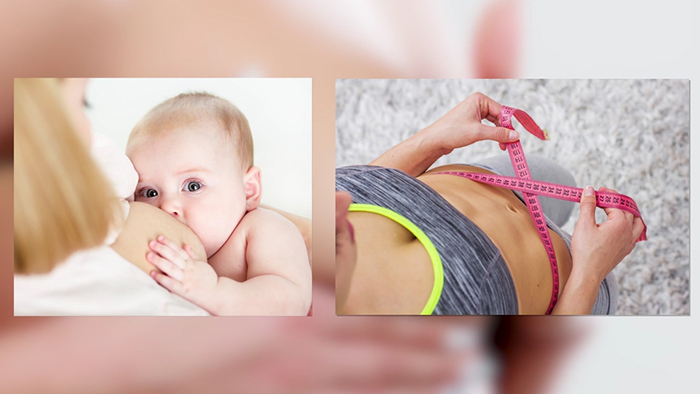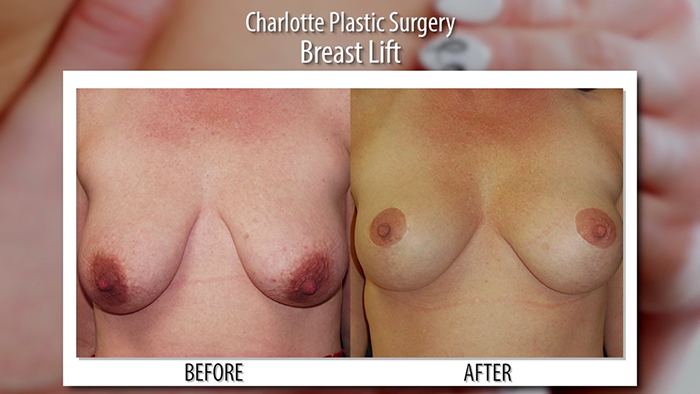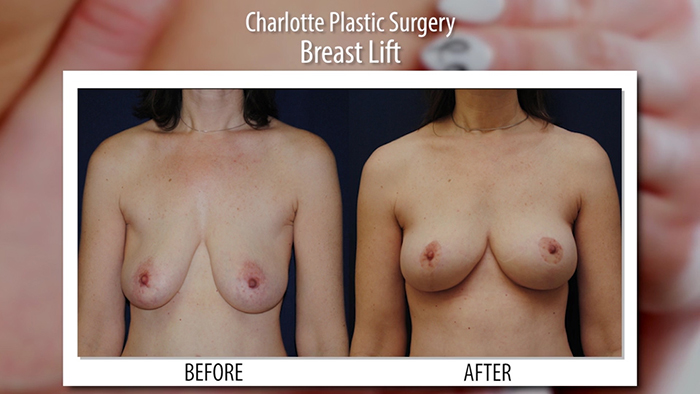Pregnancy, breast feeding, weight gain or loss, genetics, and age all wreak havoc on a woman’s breasts, causing them to sag, droop and lose volume in the upper section or pole. This can not only make a woman feel unattractive and older than her years, but it can also adversely affect her ability to wear certain clothes. A breast lift or mastopexy is a surgical procedure that lifts a woman’s breasts back to a higher plane on her chest, restoring a more youthful, perky look to the breasts. One of the potential downsides has been that certain patients will require an implant with their lift in order to achieve their desired look. Dr. Jarrod Daniel of Charlotte, NC discusses what he calls a mastopexy with auto-augmentation in which he’s able to use a patient’s own lower breast volume to restore upper pole fullness without an implant during a breast lift.
by Katherine Stuart
and Jarrod Daniel, MD
Patient’s Own Extra Breast Volume Instead of an Implant
More and more women today are seeking a breast lift. According to the American Society of Plastic Surgeons, there has been an 89% increase in the number of breast lift procedures over the last 5 years. There are typically two main goals that any surgeon wants to accomplish with a breast lift. One is to lift the nipple areola complex, which tends to sag with time, pregnancy, and weight loss or gain, back to a higher point on the chest. This will make a woman’s breasts look more youthful and perky. Second is to add back some volume in the upper pole that women tend to lose with age.
In the past, surgeons accomplished these goals by performing a breast lift and then adding a small implant. However, “some women don’t want implants [because they don’t want something foreign in their body],” says Daniel. For these patients – assuming that they have enough breast volume on their own – he will perform a mastopexy with auto-augmentation. In this procedure, he uses the bottom portion of the breast to create a pedicle or tongue which is then tucked up underneath the breast and sewn into the chest wall. Oftentimes, he will secure this tissue with a new mesh called GalaFLEX to hold it in place so that it doesn’t sag or bottom out over time. Unlike an implant, this mesh is made from a naturally occurring, absorbable material. Within about 12-18 months, the mesh dissolves, leaving behind the patient’s own tissue which is now 3-5 times stronger than it was before the surgery.
Pros and Cons of a Breast Lift
The number one benefit of a breast lift is that it restores a more perky, youthful look and feel to the breasts. This benefit is increased with auto-augmentation as the patient gets to use her own tissue. If a patient is on the border, meaning she doesn’t really have enough of her own volume to restore the upper pole, “fat transfer can be used to augment the breast as well,” says Daniel. He liposuctions fat from an area such as the thighs, hips or buttocks where there may be excess and transfers it to the breasts.
The biggest downside to a breast lift for most women is scars. According to Dr. Daniel, most women won’t notice the scar around the nipple as it blends in with the color change between the skin and the nipple, while the vertical scar really does fade with time.
The mastopexy with auto-augmentation is a great option for women who don’t want an implant, but do want more upper pole fullness with their breast lift.

















Facebook
Twitter
Instagram
YouTube
RSS